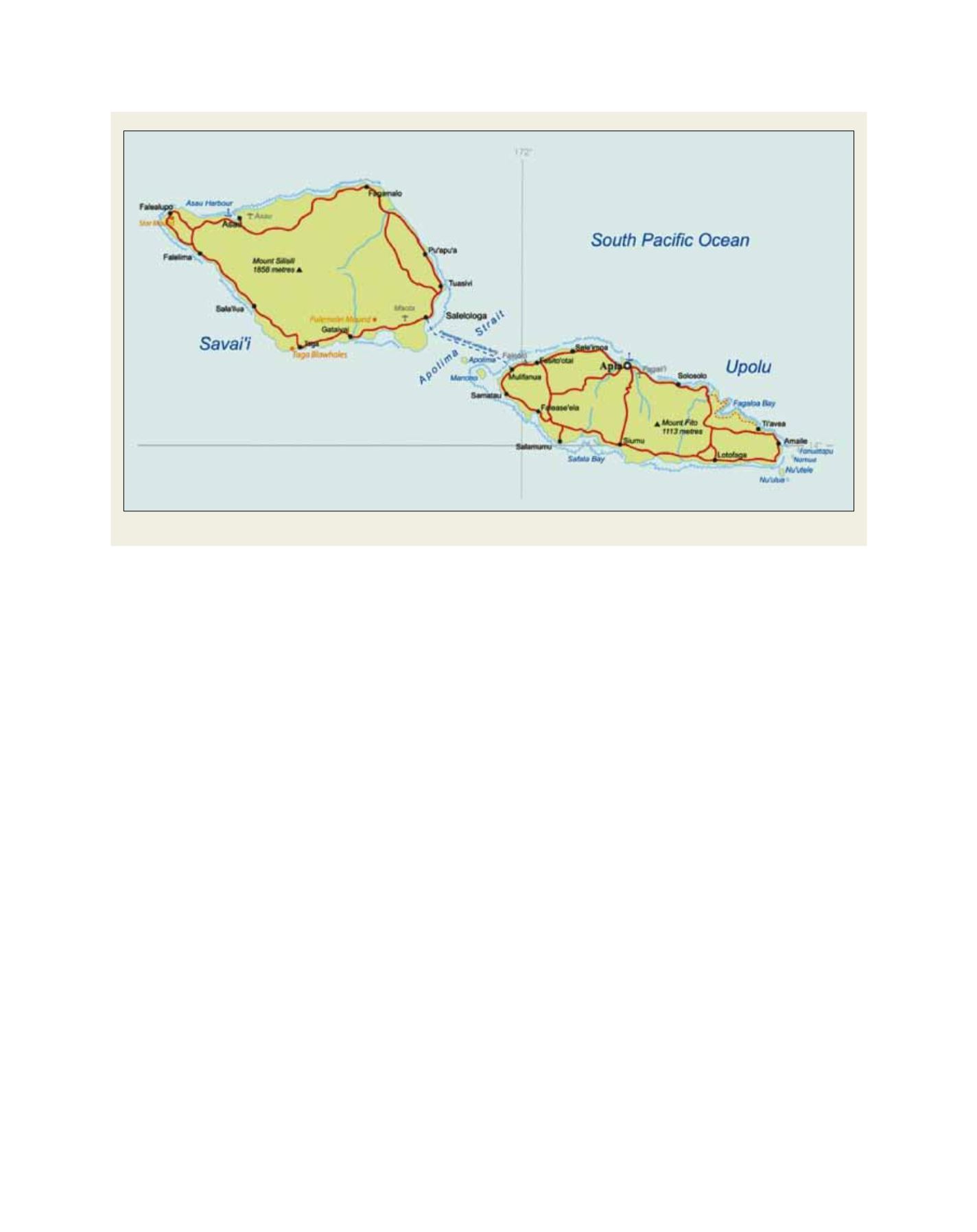

[
] 166
E
nergy
thermal station at Fiaga, in central Upolu, to add capacity
to the power grid. However, this strategy increases Samoa’s
exposure to global energy markets, where the cost of diesel
is already high and expected to rise. It also makes Samoa
more vulnerable to price shocks and market fluctuations
which pose significant economic risks to countries that are
reliant on imported energy sources and raises additional
associated environmental concerns from increased emis-
sions of CO
2
and other pollutants.
A third option is to improve the operational efficiency
of the Afulilo hydropower scheme by incorporating
information on likely variations from normal rain-
fall. This would allow for short-term climate forecasts
provided by the Samoa Meteorological Division (SMD)
to be an integral component of the scheme’s manage-
ment strategy. Under this strategy, seasonal climate
forecasts would be used to predict the risk of energy
shortfalls with sufficient lead time to allow the appli-
cation of more flexible operating procedures, thus
ensuring that the water supply is managed in the most
practical and efficient manner for prevailing and likely
climate conditions. These forecasts could also be used
to inform forward planning with regard to sourcing
supplementary energy supplies in high risk years. Given
the strong relationship between climate predictors and
rainfall in Samoa, the use of climate forecasts for the
management of hydropower production is seen as the
most feasible and cost effective option, at least in the
short term. In the longer term, improved management
of hydropower production could also work hand in
hand with other infrastructure upgrades while protect-
ing the health of Afulilo Dam as a tilapia nursery.
for Samoa, reducing pressure on coastal fish stocks.
4
To ensure the
health of tilapia in the dam while maximizing energy production effi-
ciency, the dead storage level is set at around 30 per cent of capacity,
greatly limiting the usable water supply for hydropower purposes.
To hedge against climate risk, the Electric Power Corporation
(EPC) sets conservative production goals. However, in most years,
when drought does not occur, this leads to suboptimal energy produc-
tion, reducing the overall efficiency of the hydropower operation.
Considering the options
The Government of Samoa aims to increase the proportion of energy
produced by renewable sources by 20 per cent before 2030. EPC is
prioritizing the research and use of locally-appropriate renewable
energy sources. Hydropower has been recognized as one of the most
reliable and cost effective forms of renewable energy, and EPC’s effort
in using this includes maximizing the output of existing facilities as
well as assessing the feasibility of additional hydropower schemes.
There are various options for mitigating the effects of climate
variability on the energy sector of Samoa. One option involves
expanding the dam and increasing the production capacity at
Ta’elefaga Powerhouse by raising the dam wall and adding a third
turbine to the powerhouse. However, due to local topography, the
additional inflow would need to be sourced from lower elevations
than the dam itself, requiring the water to be pumped to the dam
and partially offsetting the increased power production that would
be achieved.
5
An approximate 30 per cent dead storage level is also
required to maintain the long-term health of the Afulilo Dam ecosys-
tem, which is important to its use as a tilapia nursery ground. Thus,
lowering the dead storage level to increase the overall volume of
water available for hydropower production is not a viable option.
A second option is to increase thermal power production and the
proportion of energy sourced from diesel fuel. EPC is building a new
A map of Samoa, showing the main islands of Savai’i and Upolu
Source: Australian BoM
















